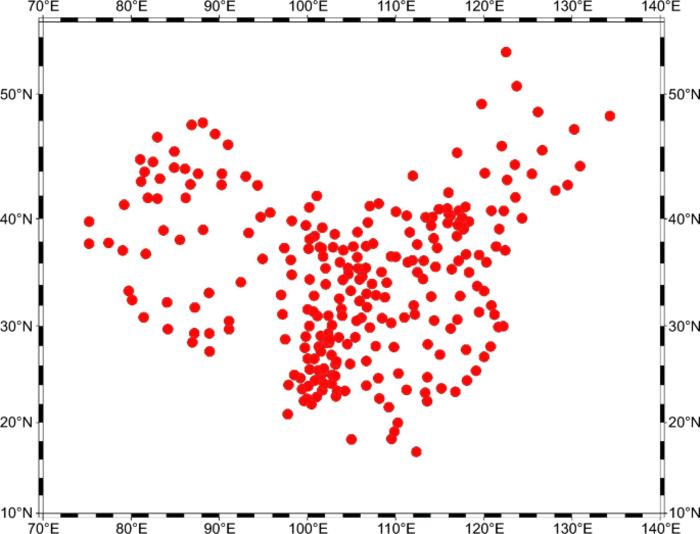A pioneering study introduces a unified approach to ambiguity resolution in Global Navigation Satellite System (GNSS) precise positioning, offering a significant leap in both the speed and accuracy of location determination. The novel Multiple Integer Candidates Ambiguity Resolution (MICAR) algorithm harmonizes Full Ambiguity Resolution (FAR) and Partial Ambiguity Resolution (PAR) under the Best Integer Equivariant (BIE) estimator, promising a transformative impact on navigation and positioning systems.
Accurate Global Navigation Satellite System (GNSS) positioning is essential for various applications, but traditional methods like Full Ambiguity Resolution (FAR) and Partial Ambiguity Resolution (PAR) have limitations in precision and speed. These techniques often require extended convergence times and can introduce errors due to noisy observations or biased models. Recent advancements aim to address these issues by developing more efficient algorithms. Based on these challenges, it is necessary to conduct in-depth research to improve GNSS positioning accuracy and efficiency.
The study (DOI: 10.1186/s43020-024-00141-w), conducted by researchers from Wuhan University and Peking University, and published in Satellite Navigation on 8 July 2024, introduces the Multiple Integer Candidates Ambiguity Resolution (MICAR) algorithm. This novel approach combines FAR and PAR techniques within the Best Integer Equivariant (BIE) framework to optimize GNSS ambiguity resolution. The MICAR algorithm significantly enhances the precision and speed of GNSS positioning by exploiting multiple integer candidates.
The MICAR algorithm integrates FAR and PAR within the BIE framework to enhance GNSS ambiguity resolution. This innovative approach allows for more accurate estimation of ambiguities by leveraging multiple integer candidates, surpassing the precision of traditional FAR and PAR methods. In experiments using simulated data from Global Positioning System (GPS), BeiDou Navigation Satellite System (BDS), and Galileo systems, MICAR demonstrated significant improvements in convergence speed and positioning accuracy. For example, MICAR achieved convergence in just 18 minutes compared to 21.5 minutes with FAR. Additionally, MICAR reduced horizontal positioning errors by 9.8% and vertical errors by 3.5%, showcasing its superior performance. These results highlight MICAR’s potential to transform GNSS positioning by providing faster and more precise solutions, which are critical for applications requiring high accuracy.
Dr. Shengfeng Gu from Wuhan University stated, “The MICAR algorithm represents a significant advancement in GNSS positioning technology. By integrating multiple ambiguity resolution techniques, it offers higher precision and faster convergence, which are critical for applications requiring precise navigation.”
The MICAR algorithm’s enhanced precision and speed have far-reaching implications for GNSS applications, including autonomous vehicles, surveying, and geospatial mapping. Its ability to quickly and accurately resolve ambiguities can improve the reliability and efficiency of GNSS-based systems, leading to better performance in various real-world scenarios.

Credit: Satellite Navigation
A pioneering study introduces a unified approach to ambiguity resolution in Global Navigation Satellite System (GNSS) precise positioning, offering a significant leap in both the speed and accuracy of location determination. The novel Multiple Integer Candidates Ambiguity Resolution (MICAR) algorithm harmonizes Full Ambiguity Resolution (FAR) and Partial Ambiguity Resolution (PAR) under the Best Integer Equivariant (BIE) estimator, promising a transformative impact on navigation and positioning systems.
Accurate Global Navigation Satellite System (GNSS) positioning is essential for various applications, but traditional methods like Full Ambiguity Resolution (FAR) and Partial Ambiguity Resolution (PAR) have limitations in precision and speed. These techniques often require extended convergence times and can introduce errors due to noisy observations or biased models. Recent advancements aim to address these issues by developing more efficient algorithms. Based on these challenges, it is necessary to conduct in-depth research to improve GNSS positioning accuracy and efficiency.
The study (DOI: 10.1186/s43020-024-00141-w), conducted by researchers from Wuhan University and Peking University, and published in Satellite Navigation on 8 July 2024, introduces the Multiple Integer Candidates Ambiguity Resolution (MICAR) algorithm. This novel approach combines FAR and PAR techniques within the Best Integer Equivariant (BIE) framework to optimize GNSS ambiguity resolution. The MICAR algorithm significantly enhances the precision and speed of GNSS positioning by exploiting multiple integer candidates.
The MICAR algorithm integrates FAR and PAR within the BIE framework to enhance GNSS ambiguity resolution. This innovative approach allows for more accurate estimation of ambiguities by leveraging multiple integer candidates, surpassing the precision of traditional FAR and PAR methods. In experiments using simulated data from Global Positioning System (GPS), BeiDou Navigation Satellite System (BDS), and Galileo systems, MICAR demonstrated significant improvements in convergence speed and positioning accuracy. For example, MICAR achieved convergence in just 18 minutes compared to 21.5 minutes with FAR. Additionally, MICAR reduced horizontal positioning errors by 9.8% and vertical errors by 3.5%, showcasing its superior performance. These results highlight MICAR’s potential to transform GNSS positioning by providing faster and more precise solutions, which are critical for applications requiring high accuracy.
Dr. Shengfeng Gu from Wuhan University stated, “The MICAR algorithm represents a significant advancement in GNSS positioning technology. By integrating multiple ambiguity resolution techniques, it offers higher precision and faster convergence, which are critical for applications requiring precise navigation.”
The MICAR algorithm’s enhanced precision and speed have far-reaching implications for GNSS applications, including autonomous vehicles, surveying, and geospatial mapping. Its ability to quickly and accurately resolve ambiguities can improve the reliability and efficiency of GNSS-based systems, leading to better performance in various real-world scenarios.
###
References
DOI
Original Source URL
Funding information
National Natural Science Foundation of China, 42174029, Shengfeng Gu.
About Satellite Navigation
Satellite Navigation (E-ISSN: 2662-1363; ISSN: 2662-9291) is the official journal of Aerospace Information Research Institute, Chinese Academy of Sciences. The journal aims to report innovative ideas, new results or progress on the theoretical techniques and applications of satellite navigation. The journal welcomes original articles, reviews and commentaries.
Journal
Satellite Navigation
Subject of Research
Not applicable
Article Title
Multiple integer candidates ambiguity resolution: a unification ambiguity resolution algorithm
Article Publication Date
8-Jul-2024
COI Statement
The authors declare that they have no competing interests.



